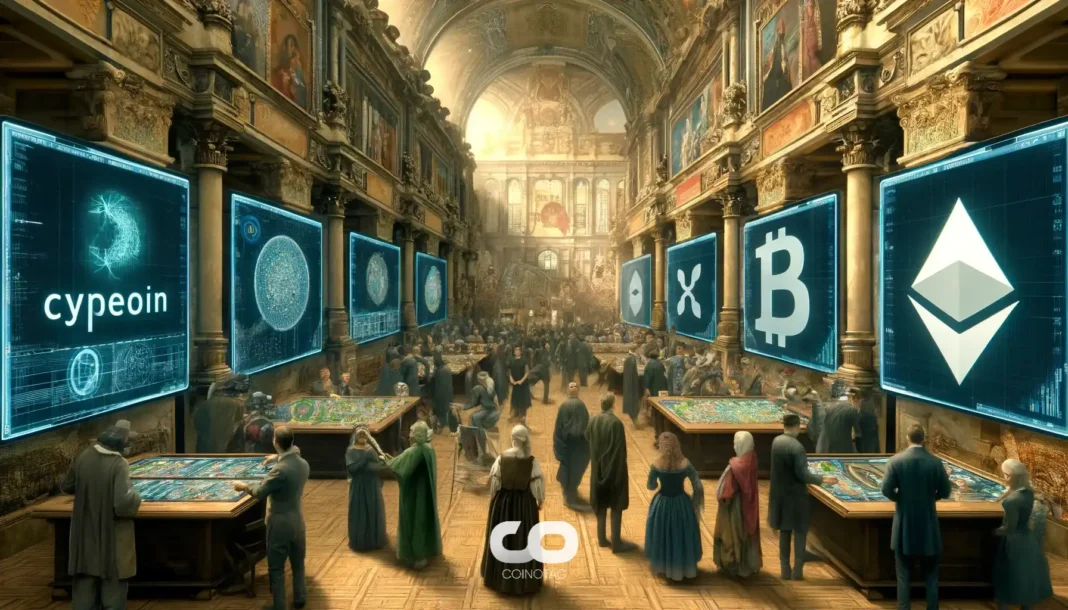| COINOTAG recommends • Exchange signup |
| 💹 Trade with pro tools |
| Fast execution, robust charts, clean risk controls. |
| 👉 Open account → |
| COINOTAG recommends • Exchange signup |
| 🚀 Smooth orders, clear control |
| Advanced order types and market depth in one view. |
| 👉 Create account → |
| COINOTAG recommends • Exchange signup |
| 📈 Clarity in volatile markets |
| Plan entries & exits, manage positions with discipline. |
| 👉 Sign up → |
| COINOTAG recommends • Exchange signup |
| ⚡ Speed, depth, reliability |
| Execute confidently when timing matters. |
| 👉 Open account → |
| COINOTAG recommends • Exchange signup |
| 🧭 A focused workflow for traders |
| Alerts, watchlists, and a repeatable process. |
| 👉 Get started → |
| COINOTAG recommends • Exchange signup |
| ✅ Data‑driven decisions |
| Focus on process—not noise. |
| 👉 Sign up → |
- Lens Lab, the developer of Lens Protocol, has announced plans to develop its own EVM-compatible Layer 2 network known as Lens Network.
- Lens Network will be an EVM-compatible Validium chain developed using zkSync’s Layer 2 development stack ZK Stack.
- “Lens Network is creating a hybrid architecture that combines Validium and Volition with the ZK Stack on Ethereum. This will not only scale, but it will also make the internet more open and fair,” said Avara’s founder Stani Kulechov.
Lens Lab announces plans to develop its own EVM-compatible Layer 2 network, Lens Network, set to revolutionize the internet by making it more open and fair.
Lens Protocol Announces Plan for ZK Stack Backed Validium Chain
Lens Network, a project of Lens Lab, the main developer of the social graph Lens Protocol and a significant component of the Web3 project Avara, will be an EVM-compatible Validium chain developed using zkSync’s Layer 2 development stack ZK Stack. The transition to Lens Network will be carried out in three stages: starting with a Validium chain on Ethereum, followed by the introduction of a data availability provider, and finally, the integration of Volition to increase security and user control over transactions.
Hybrid Architecture for Enhanced Scalability and Fairness
Validium and Volition are blockchain scaling solutions that use zero-knowledge (ZK) proofs, but operate under different security assumptions. “Lens Network is creating a hybrid architecture that combines Validium and Volition with the ZK Stack on Ethereum. This will not only scale, but it will also make the internet more open and fair,” said Avara’s founder Stani Kulechov. The project has so far used the Polygon POS chain to carry out transactions and had previously developed its own scaling solution called Momoka.
Decentralized Social Graph and User Interaction
Lens is defined as a decentralized and user-owned map of connections and relationships between individuals and assets. NFTs serving as user profiles allow users to interact with decentralized applications within the ecosystem. The design of Lens-based dapps prevents any asset from having control over content.
| COINOTAG recommends • Professional traders group |
| 💎 Join a professional trading community |
| Work with senior traders, research‑backed setups, and risk‑first frameworks. |
| 👉 Join the group → |
| COINOTAG recommends • Professional traders group |
| 📊 Transparent performance, real process |
| Spot strategies with documented months of triple‑digit runs during strong trends; futures plans use defined R:R and sizing. |
| 👉 Get access → |
| COINOTAG recommends • Professional traders group |
| 🧭 Research → Plan → Execute |
| Daily levels, watchlists, and post‑trade reviews to build consistency. |
| 👉 Join now → |
| COINOTAG recommends • Professional traders group |
| 🛡️ Risk comes first |
| Sizing methods, invalidation rules, and R‑multiples baked into every plan. |
| 👉 Start today → |
| COINOTAG recommends • Professional traders group |
| 🧠 Learn the “why” behind each trade |
| Live breakdowns, playbooks, and framework‑first education. |
| 👉 Join the group → |
| COINOTAG recommends • Professional traders group |
| 🚀 Insider • APEX • INNER CIRCLE |
| Choose the depth you need—tools, coaching, and member rooms. |
| 👉 Explore tiers → |
Conclusion
The new version of Lens Protocol, which will serve as a central hub for Lens users, will be supported by Lens Network. This hub will seamlessly integrate with other EVM and non-EVM blockchains, further enhancing the versatility and benefit of the Lens ecosystem. With its focus on enhanced scalability, security, and user control, Lens Network is poised to revolutionize the internet by making it more open and fair.
| COINOTAG recommends • Members‑only research |
| 📌 Curated setups, clearly explained |
| Entry, invalidation, targets, and R:R defined before execution. |
| 👉 Get access → |
| COINOTAG recommends • Members‑only research |
| 🧠 Data‑led decision making |
| Technical + flow + context synthesized into actionable plans. |
| 👉 Join now → |
| COINOTAG recommends • Members‑only research |
| 🧱 Consistency over hype |
| Repeatable rules, realistic expectations, and a calmer mindset. |
| 👉 Get access → |
| COINOTAG recommends • Members‑only research |
| 🕒 Patience is an edge |
| Wait for confirmation and manage risk with checklists. |
| 👉 Join now → |
| COINOTAG recommends • Members‑only research |
| 💼 Professional mentorship |
| Guidance from seasoned traders and structured feedback loops. |
| 👉 Get access → |
| COINOTAG recommends • Members‑only research |
| 🧮 Track • Review • Improve |
| Documented PnL tracking and post‑mortems to accelerate learning. |
| 👉 Join now → |







